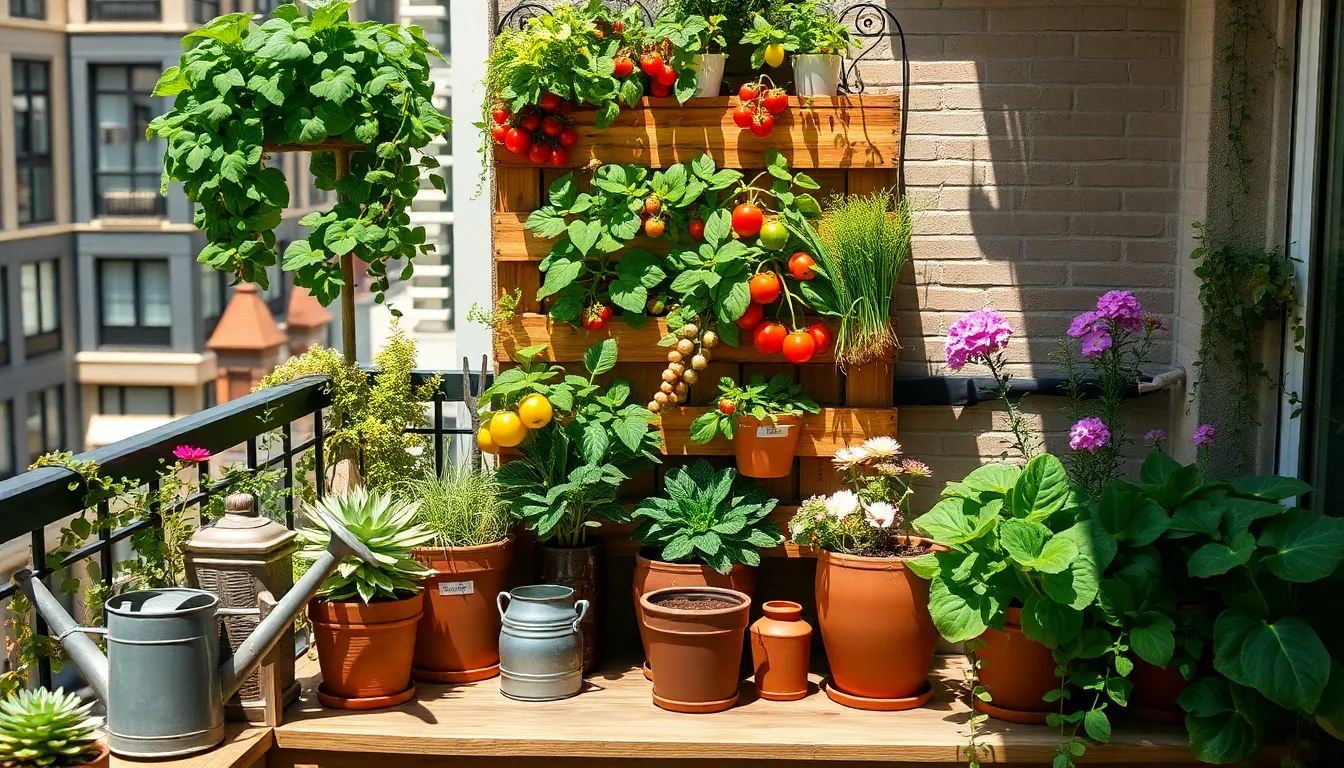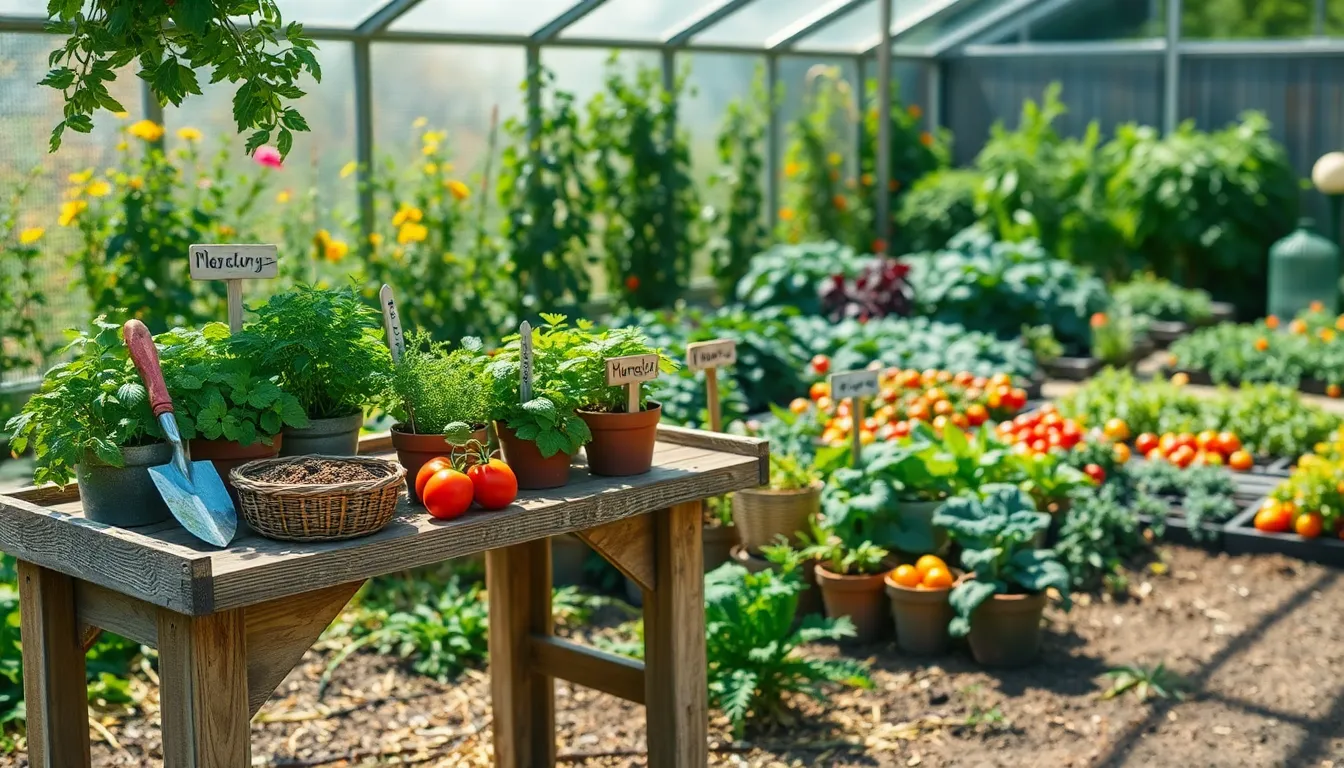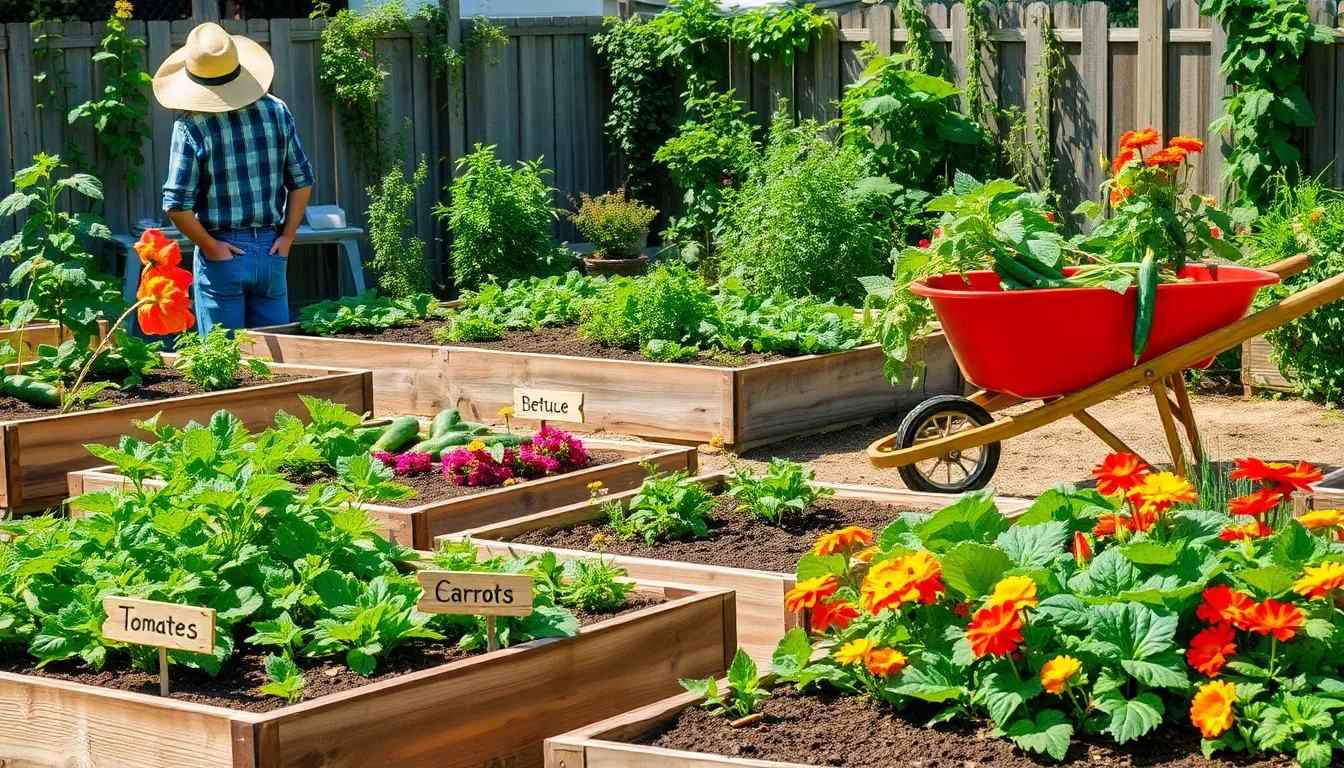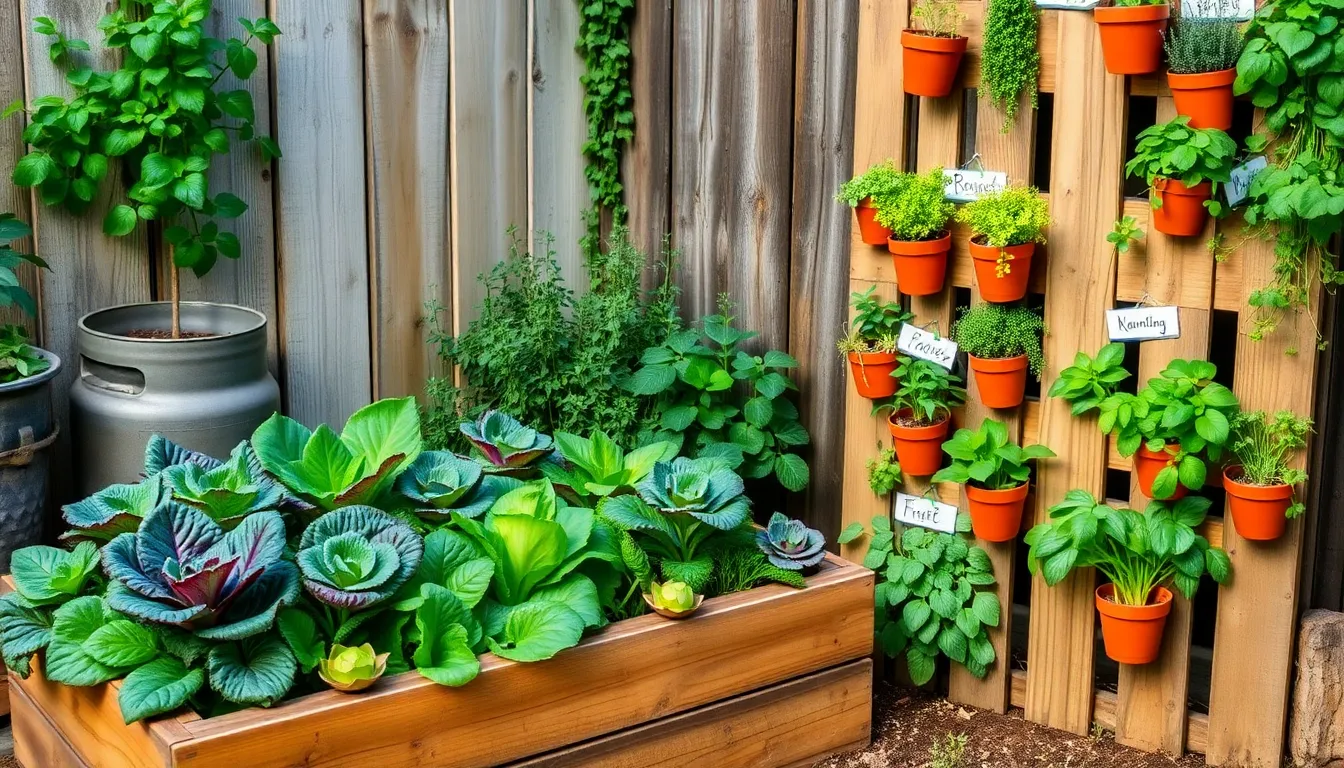Welcome to the verdant world of vertical organic gardening, where every inch of space becomes a canvas for your green-thumbed creativity! Whether you’re just starting your gardening journey or you’re a seasoned pro looking to optimize your space, our guide “13 Vertical Organic Gardening Tips” is your ticket to transforming walls, balconies, and small yards into lush, productive paradises. This list is a treasure trove of innovative garden design strategies that can revolutionize your gardening experience, making it more efficient and rewarding.
Imagine the satisfaction of plucking fresh herbs from a living wall or harvesting juicy tomatoes from a cascading tower—these practical tips will help you achieve just that. Vertical gardening not only maximizes limited space but also brings a host of benefits, from improved air circulation to easier maintenance. With each tip, you’ll build confidence and discover new ways to nurture your plants, ensuring a flourishing garden that brings joy and a sense of accomplishment. Get ready to elevate your gardening game and reap the bountiful rewards of a thriving, skyward-reaching oasis!
Select Space-Saving Vertical Planters

Choosing the right vertical planters can maximize your garden space efficiently. Opt for multi-tiered planters that allow you to grow a variety of plants in a compact area.
Wall-mounted planters are perfect for balconies or small patios. These planters can be attached directly to walls or fences, providing an excellent way to grow herbs or small vegetables.
For those with limited ground space, hanging planters offer a versatile solution. They allow you to take advantage of vertical space by suspending plants at different heights, creating a lush, layered effect.
Consider using stackable planters, which allow you to grow more in a smaller footprint. These are ideal for strawberries, leafy greens, or even flowering plants, as they make efficient use of vertical space.
Optimize Sunlight with Wall Positioning
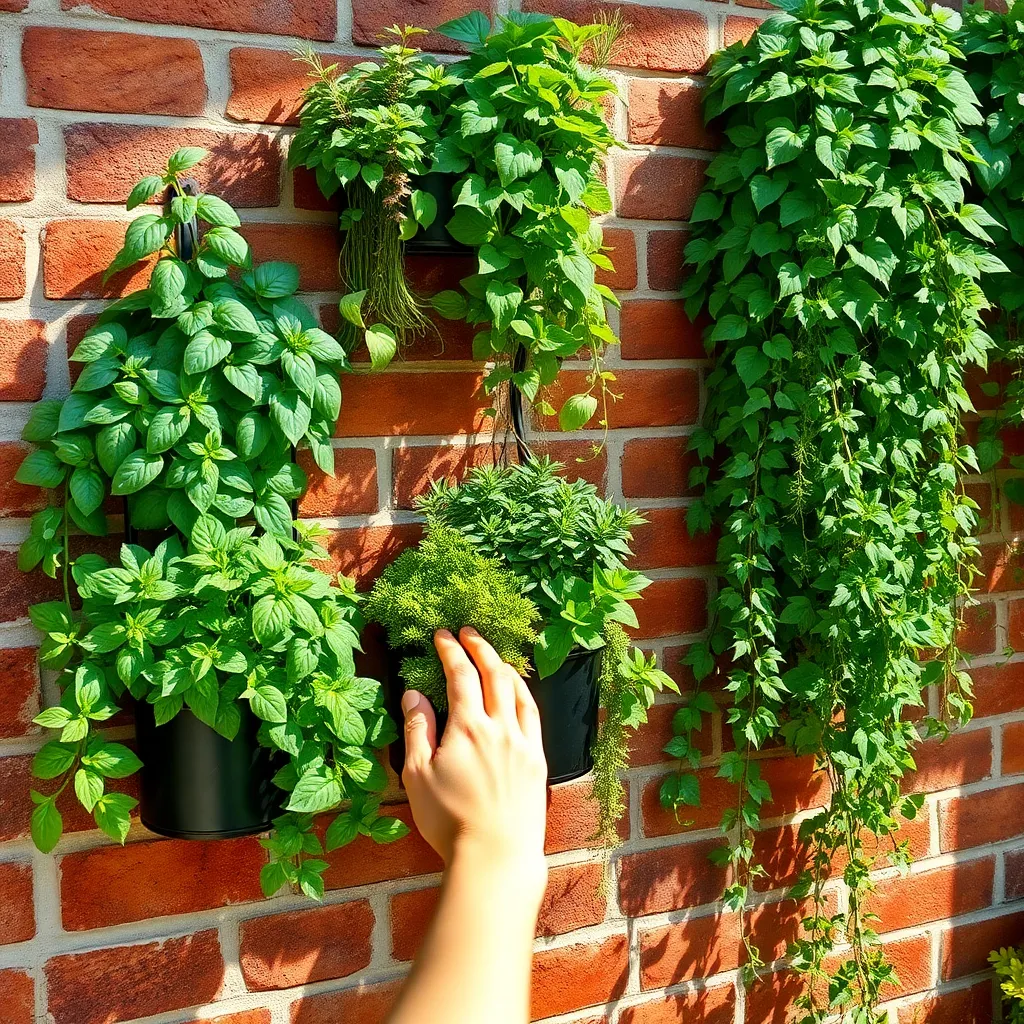
Positioning your vertical garden against the right wall is crucial for maximizing sunlight exposure. Walls facing south in the Northern Hemisphere or north in the Southern Hemisphere typically receive the most sunlight, which can be beneficial for sun-loving plants.
Consider the shadow patterns that your chosen wall creates throughout the day. Observing these patterns can help you decide which plants to place where, as some may thrive better in partial shade.
For those new to vertical gardening, start by selecting plants that require similar sunlight conditions. Plants like tomatoes, peppers, and strawberries are excellent choices for walls with ample sunlight.
Advanced gardeners might experiment by rotating plants seasonally to optimize sunlight exposure. This technique ensures that plants receive the ideal amount of light at different times of the year, promoting healthier growth.
Use Organic Soil Amendments
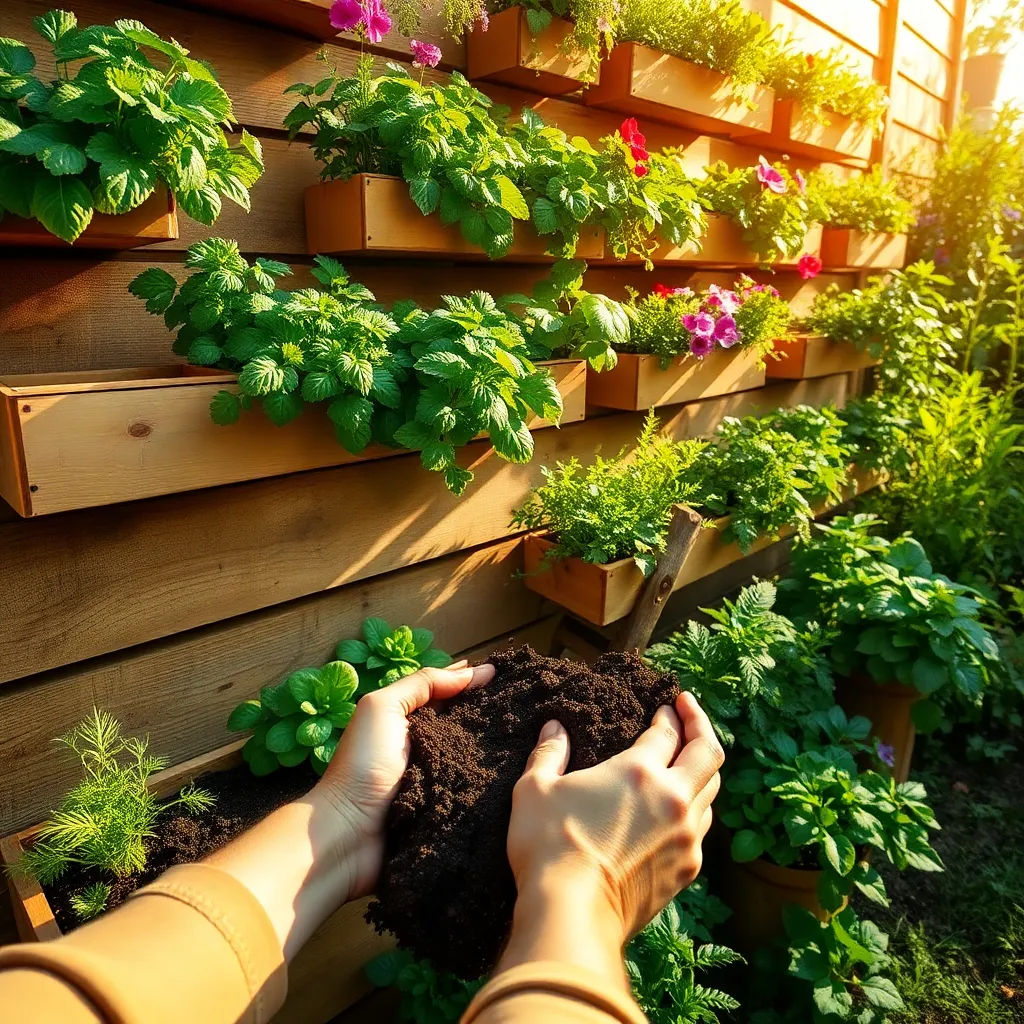
Using organic soil amendments is a key strategy in enhancing plant growth and health in vertical gardens. Compost is an excellent amendment that enriches soil with essential nutrients, improving water retention and aeration.
For beginners, starting with a simple compost pile can be a great introduction to organic amendments. Ensure your compost is well-aerated and balanced, using a mix of green and brown materials, to create a nutrient-rich addition to your garden soil.
In addition to compost, worm castings are a powerful amendment that can be incorporated into your vertical garden. They offer a concentrated source of nutrients such as nitrogen, phosphorus, and potassium, promoting robust plant growth and vibrant foliage.
Advanced gardeners might explore using biochar, which can significantly enhance soil structure and microbial activity. Biochar not only improves nutrient retention but also helps in reducing the frequency of watering by holding moisture effectively.
Install Drip Irrigation Systems
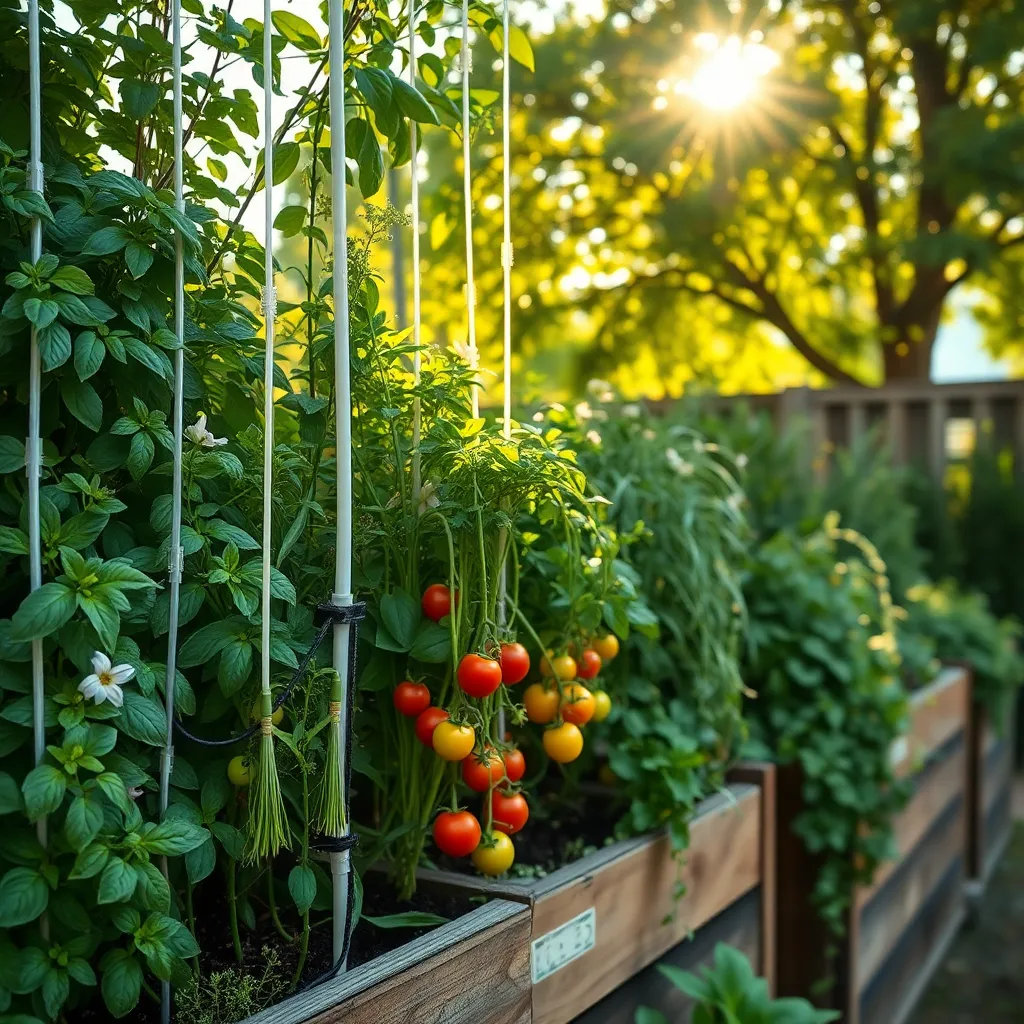
Drip irrigation systems are an efficient way to water your vertical garden while conserving water. By delivering moisture directly to the roots, these systems help prevent water wastage and reduce the risk of disease.
To install a drip irrigation system, start by choosing a system that suits your garden size and needs. Look for kits that include emitters, tubing, connectors, and a pressure regulator for ease of installation.
Begin by laying out the main tubing along the top of your vertical garden structure. Use emitters at each plant’s base to ensure every plant receives sufficient water without over-saturating the soil.
Regular maintenance is crucial to keep your drip system functioning properly. Check for clogs in the emitters and flush the system periodically to remove any debris buildup.
For advanced gardeners, consider incorporating a timer to automate the watering schedule. This ensures your plants receive consistent moisture, especially during dry spells or while you’re away.
Choose Lightweight, Durable Materials
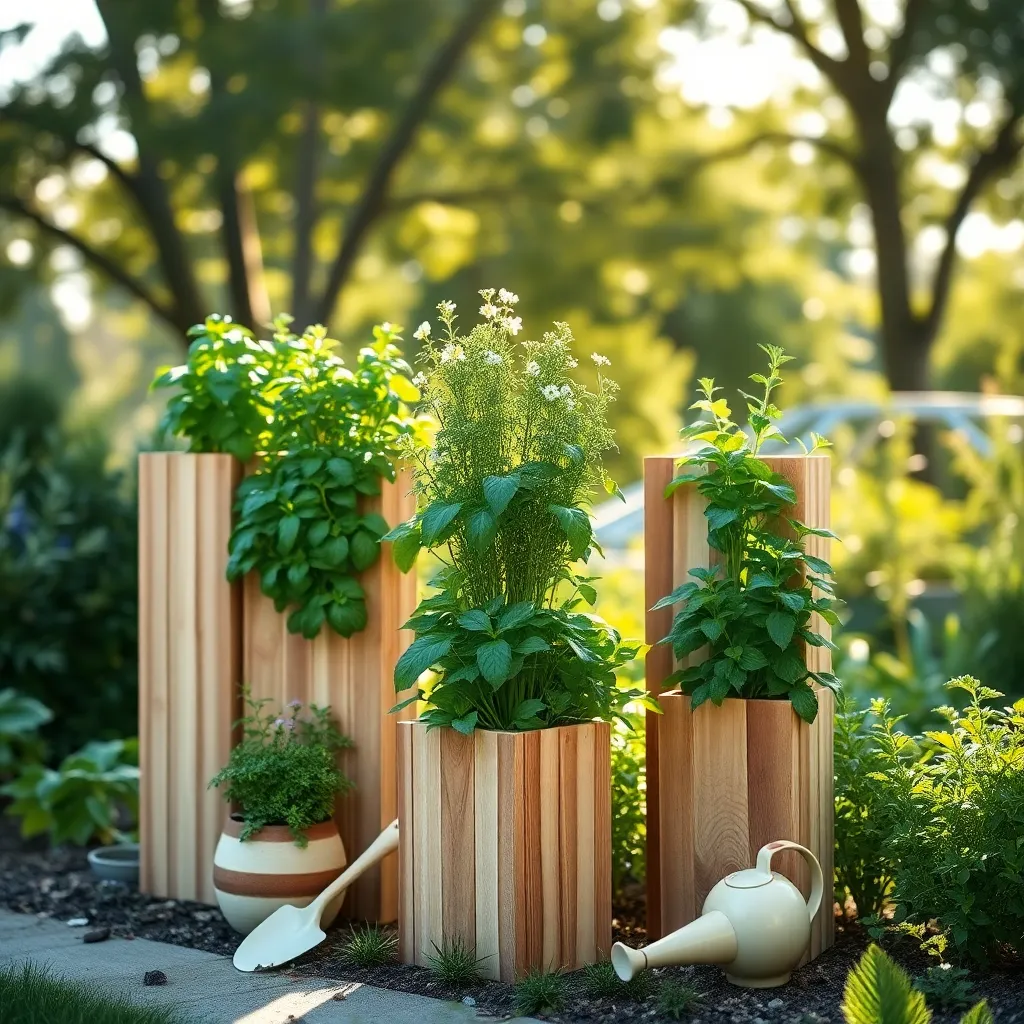
When selecting materials for your vertical garden, prioritize those that are both lightweight and durable. Materials like PVC pipes, lightweight metal, and recycled plastic ensure your structure remains sturdy while being easy to maneuver and install.
Using lightweight materials can significantly reduce the strain on your vertical garden’s support structure. This not only extends the life of your garden but also makes it easier to adjust or relocate as needed.
Durability is crucial because vertical gardens are exposed to the elements, and the materials you choose must withstand varying weather conditions. Look for UV-resistant materials to prevent degradation from sunlight exposure over time.
For those interested in an eco-friendly approach, consider using recycled or repurposed materials, which can be both sustainable and cost-effective. This choice not only reduces waste but often adds a unique aesthetic to your garden.
Incorporate Companion Planting Strategically
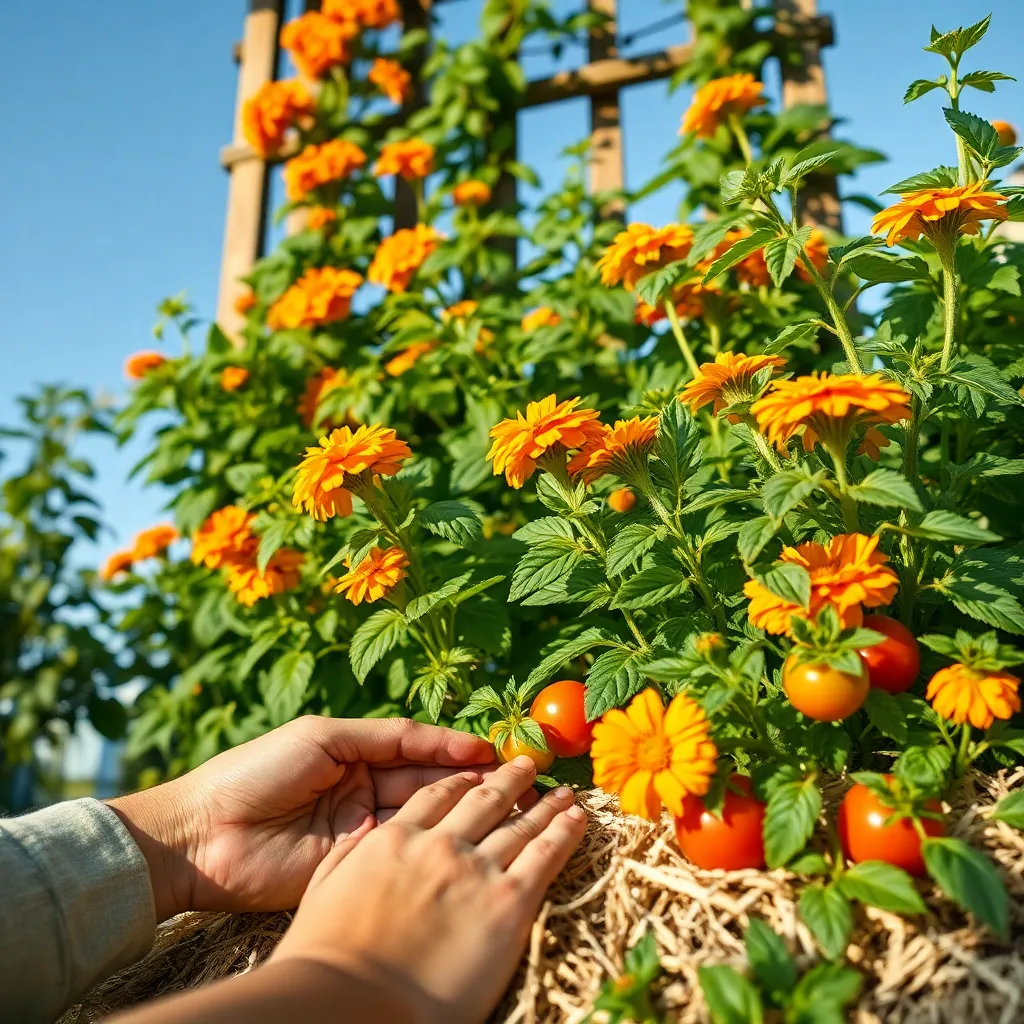
Companion planting is a strategic way to enhance your vertical garden by pairing plants that benefit each other. Start by choosing plant combinations that naturally deter pests and improve growth, like tomatoes with basil.
Consider the needs of each plant to ensure they both thrive in the same conditions. For instance, pair plants with similar light and water requirements to simplify care and maximize yield.
Use vertical space to your advantage by planting climbers alongside supportive companions. Beans can climb up cornstalks, creating a living trellis while enriching the soil with nitrogen.
For advanced gardeners, try incorporating flowering plants to attract beneficial insects. Marigolds not only add color but also repel nematodes, making them a great addition to your vertical garden structure.
Rotate Crops for Soil Health
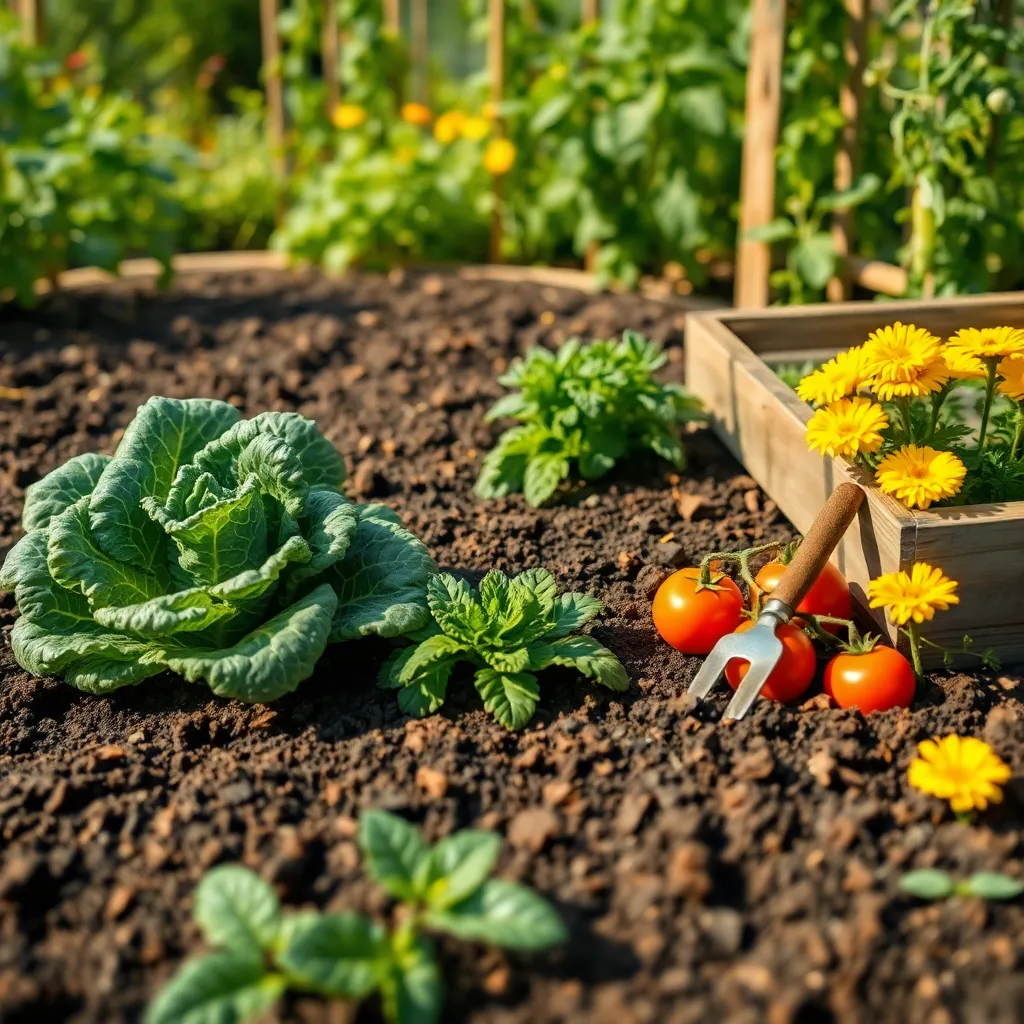
Rotating crops is a crucial practice for maintaining healthy soil in your vertical garden. By changing the location of your plants each season, you can prevent soil depletion and reduce the risk of pests and diseases.
To start, group your plants into families such as nightshades, legumes, and brassicas. Rotate these groups through different sections of your vertical garden each year to ensure the soil remains balanced and nutrient-rich.
Beginners should focus on a simple three-year rotation plan, which is easy to implement and highly effective. For example, plant tomatoes in one section, followed by leafy greens the next season, and then legumes to naturally replenish nitrogen in the soil.
Advanced gardeners might consider more complex rotations involving cover crops like clover or vetch. These cover crops not only enrich the soil but also improve its structure, making it more conducive to healthy root growth.
Prune Regularly for Airflow
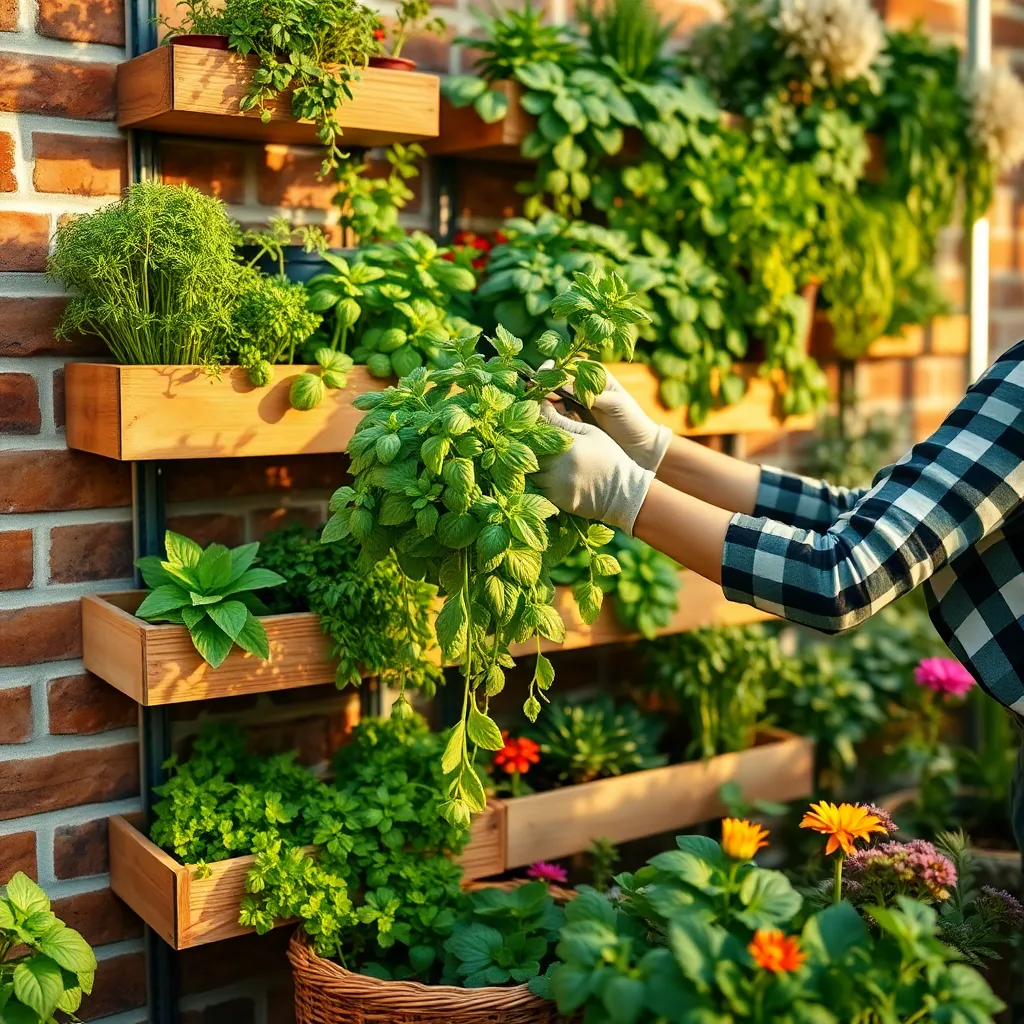
Regular pruning is essential in vertical gardening to ensure optimal airflow, which helps prevent fungal diseases and promotes healthy growth. When plants are densely packed vertically, air circulation can become limited, making pruning critical for a thriving garden.
Start by removing dead or diseased leaves, as these can harbor pests and impede air circulation. For beginners, a simple pair of garden shears will suffice, while more advanced gardeners might prefer using precision pruning scissors for delicate tasks.
Focus on thinning out crowded areas by cutting back branches that cross or rub against each other. This not only enhances airflow but also allows more light to penetrate the foliage, which is vital for photosynthesis.
Experienced gardeners can implement specific pruning techniques like “heading” cuts to shape the plant and encourage bushier growth. Remember, pruning should be done regularly throughout the growing season, but avoid it during extreme heat or cold to prevent stress on your plants.
Employ Natural Pest Deterrents
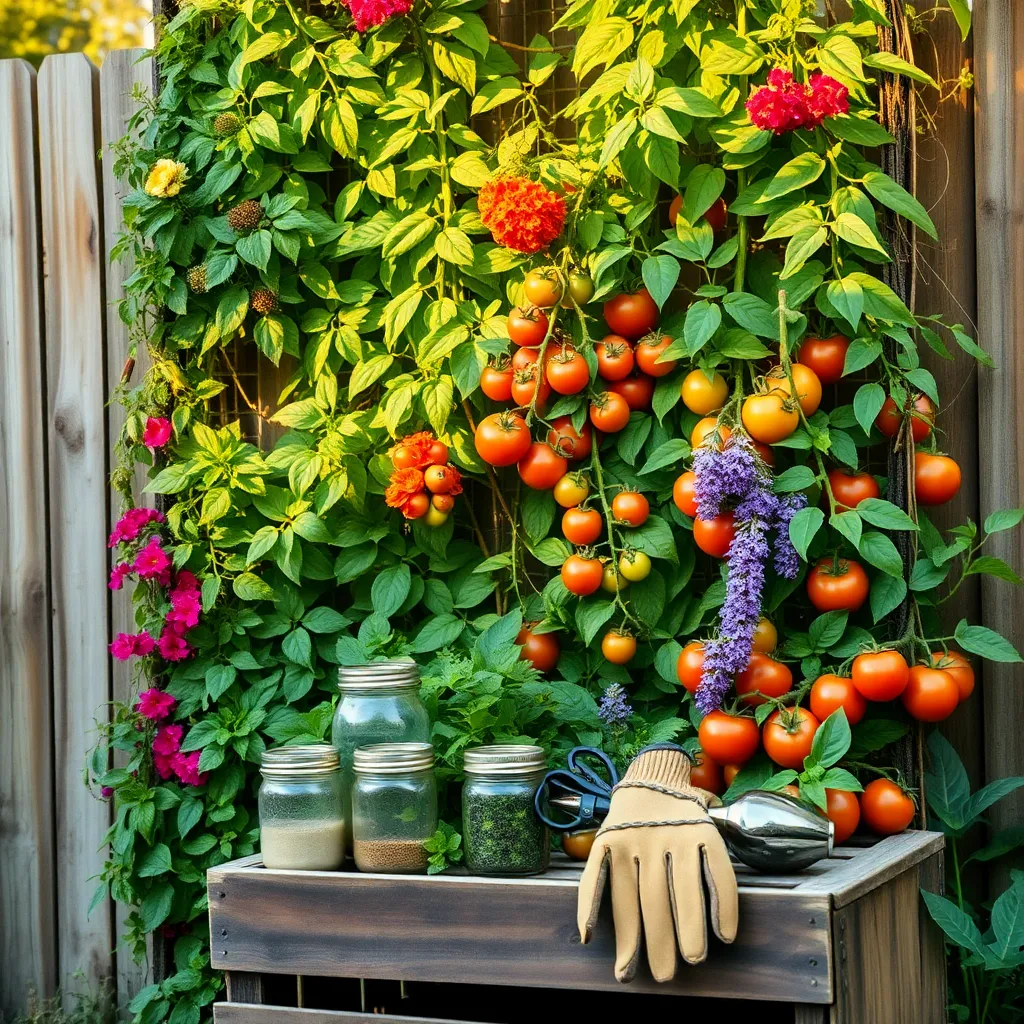
Natural pest deterrents are a great way to prevent damage to your vertical garden without resorting to chemicals. Companion planting is a fantastic technique to use here, as certain plants can repel pests naturally when grown together.
For example, marigolds are known to repel nematodes and can be planted near vegetables like tomatoes. Herbs such as basil can deter flies and mosquitoes, making them an excellent addition to your vertical garden setup.
Incorporating predatory insects is another effective strategy for natural pest control. Ladybugs and lacewings, for instance, are voracious eaters of aphids and can be encouraged by planting dill or fennel.
To further enhance your pest deterrent strategy, consider making homemade sprays using ingredients like garlic or neem oil. These natural sprays can be applied directly to the plants, providing an extra layer of protection against pests while being safe for the environment.
Harvest Frequently to Promote Growth
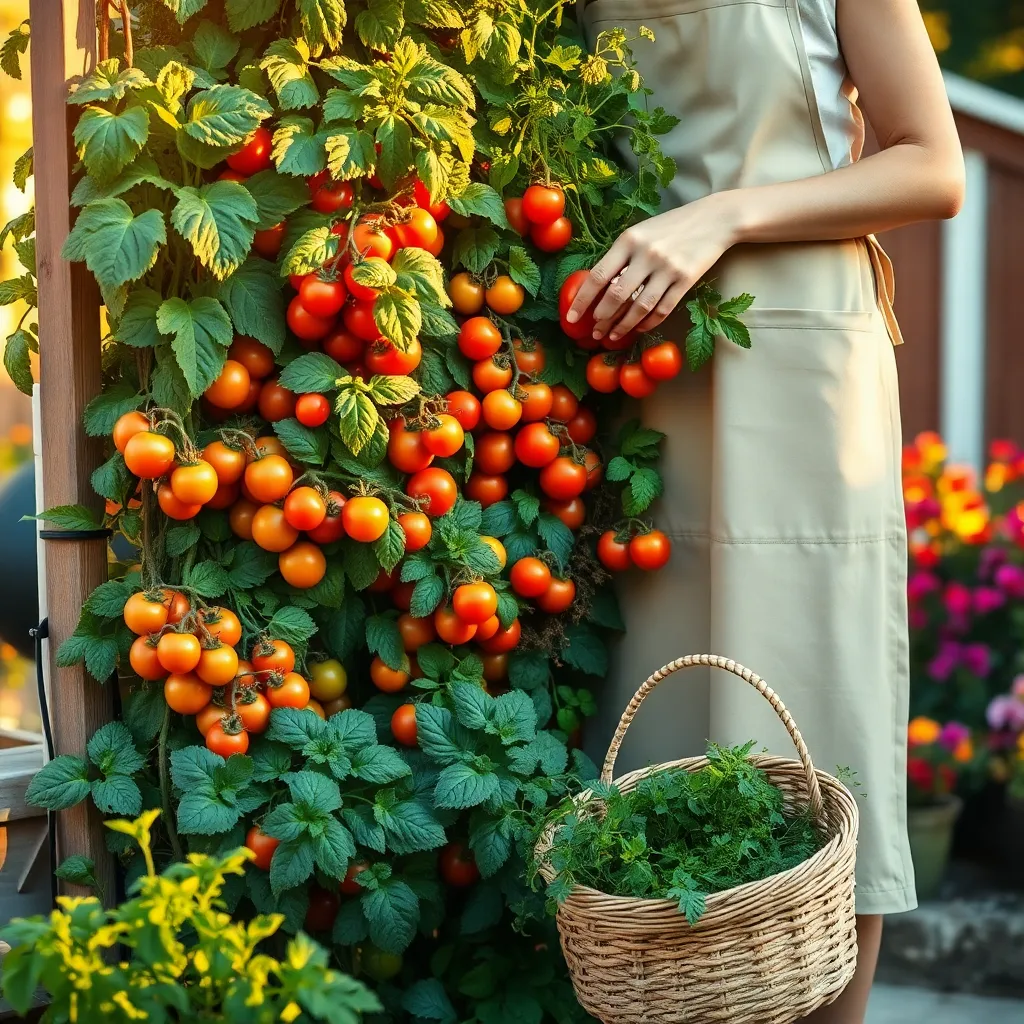
Harvesting frequently is not just about enjoying your produce; it’s also a strategic way to encourage continued plant growth. By regularly picking fruits and vegetables, you signal to the plant that it needs to produce more, often resulting in a more bountiful harvest.
For leafy greens like lettuce or spinach, practice a “cut and come again” method. This technique involves snipping the outer leaves first, which allows the plant to keep producing new growth from the center.
When growing herbs such as basil or mint, frequent harvesting is essential to prevent the plants from flowering. Once herbs flower, they tend to become bitter, and their growth slows down, so regularly pinching off tips will keep them lush and productive.
Even fruiting plants like tomatoes and peppers benefit from regular harvesting. By picking ripe fruits, you reduce the weight stress on the plant and encourage it to focus energy on developing new flowers and fruits.
Utilize Trellises for Climbing Plants
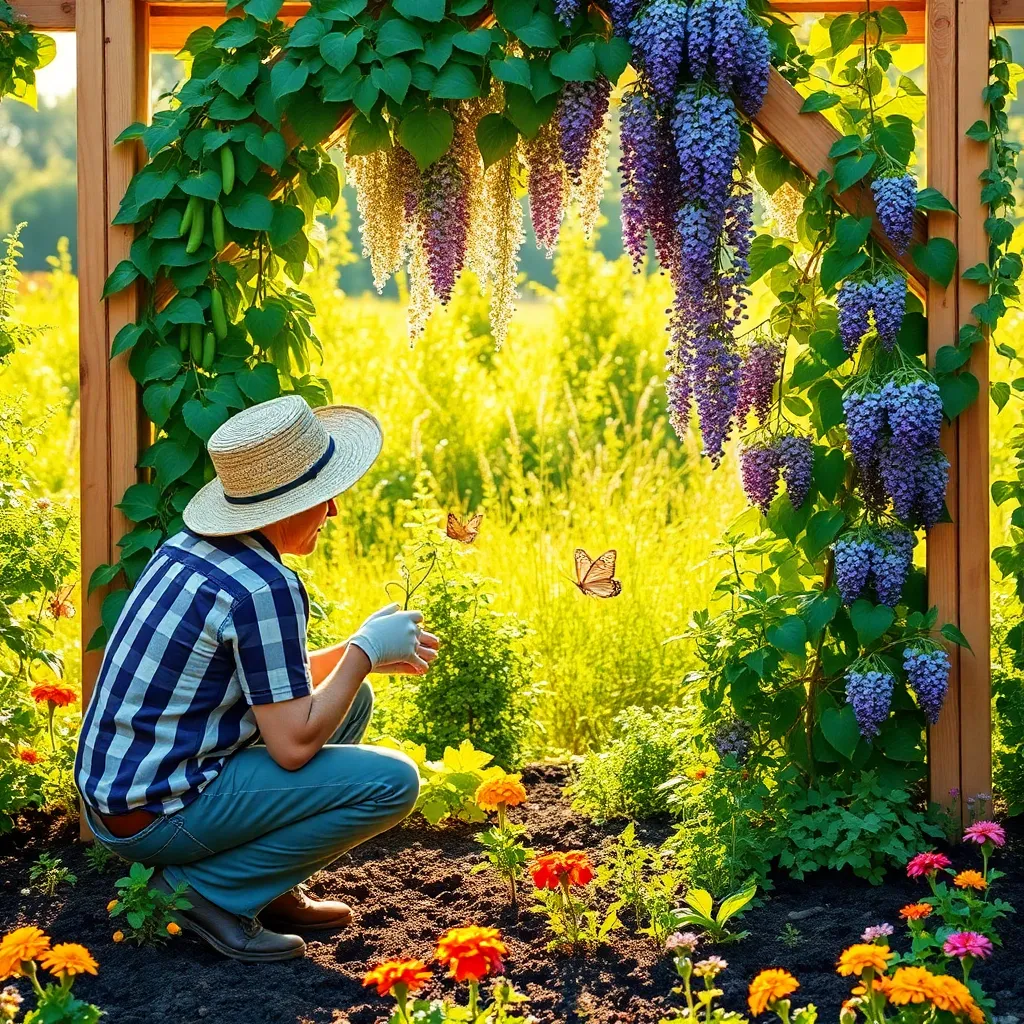
Incorporating trellises into your garden can significantly boost the growth and health of climbing plants. Trellises provide structure that allows plants like beans, peas, and cucumbers to grow vertically, saving space and enhancing air circulation.
Choose a trellis material that suits your garden style and climate; options include wood, metal, and recycled materials. For heavy climbers like squash or melons, ensure the trellis is sturdy enough to support the weight of mature fruits.
Position your trellis in a spot that receives adequate sunlight, as most climbing plants thrive with at least six hours of direct sunlight daily. Secure the base of the trellis firmly in the ground to withstand wind and plant weight, ensuring long-term stability.
When planting, space seeds or seedlings appropriately to allow room for growth and air circulation. Train young vines to climb by gently tying them to the trellis with soft ties, which will prevent damage to the delicate stems.
Ensure Adequate Drainage Solutions
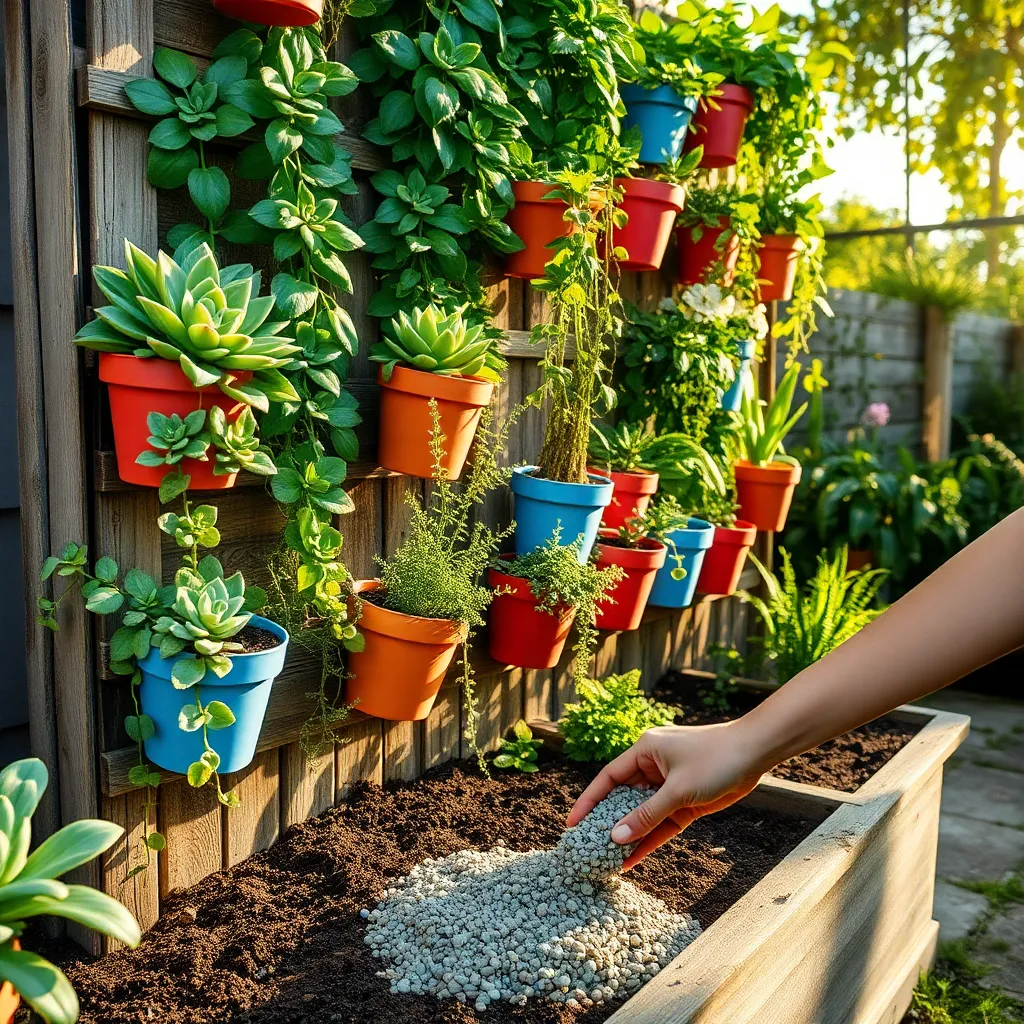
Ensuring adequate drainage is crucial in vertical gardening to avoid waterlogged roots and promote healthy plant growth. Start by selecting a well-draining soil mix—a blend of potting soil, perlite, and coco coir works well to retain moisture without becoming compacted.
When setting up your vertical garden, consider adding a layer of gravel or small stones at the bottom of each container. This layer helps excess water flow out and prevents root rot, which is a common issue in tightly packed vertical setups.
It’s also important to monitor watering frequency, as vertical gardens tend to dry out faster than traditional beds. Water your plants when the top inch of soil feels dry to the touch, ensuring they receive enough moisture without oversaturating the roots.
For advanced gardeners, installing a drip irrigation system can be a game-changer. This system allows precise control over water delivery, minimizing waste and ensuring each plant receives the optimal amount of moisture. By focusing on drainage, you’ll cultivate a thriving vertical garden that stays healthy all season long.
Apply Mulch to Retain Moisture
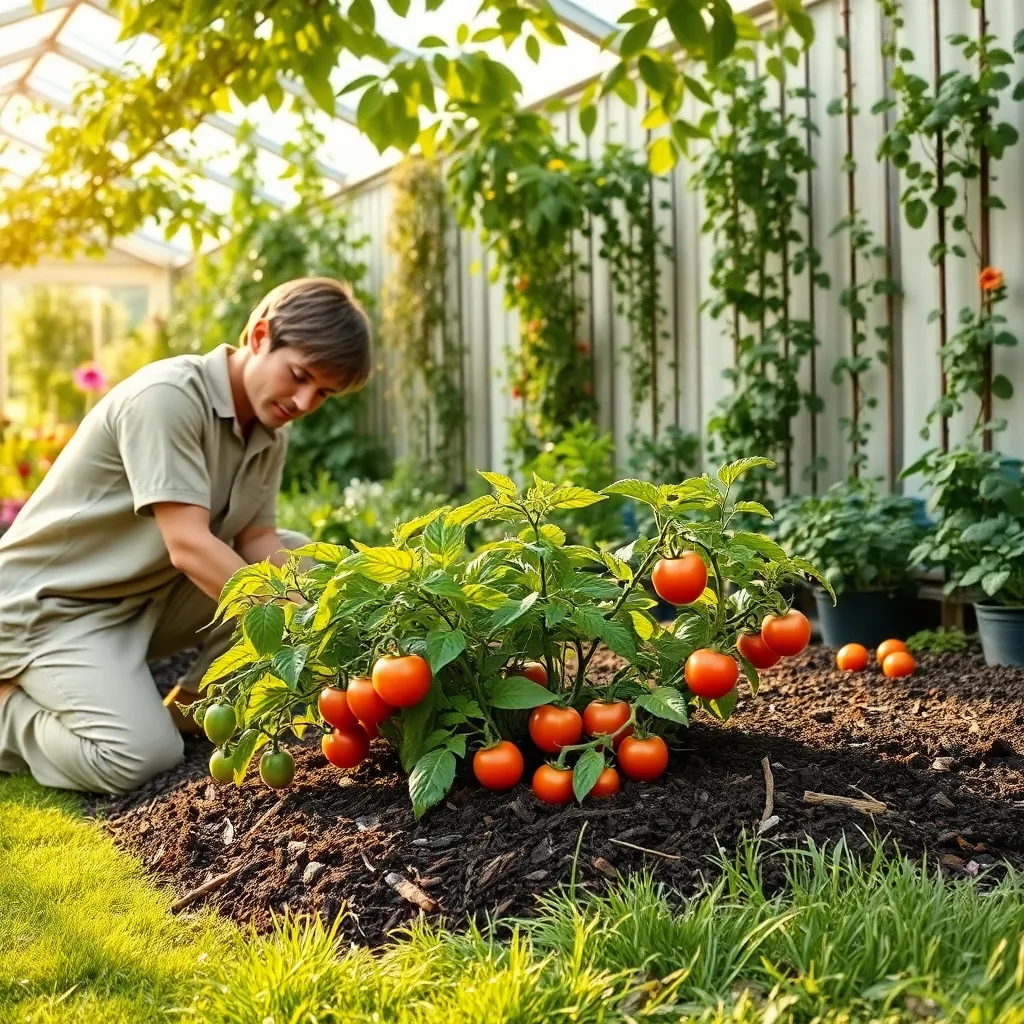
Mulching is an essential practice in vertical organic gardening for retaining soil moisture and reducing water evaporation. By covering the soil with a layer of mulch, you can significantly decrease the need for frequent watering, which is especially beneficial in vertical setups where moisture can quickly drain away.
Consider using organic mulches such as shredded leaves, straw, or grass clippings, which decompose over time and enrich the soil with nutrients. These materials not only help retain moisture but also improve soil fertility, promoting healthier plant growth.
For beginners, a mulch layer of about 2-3 inches is generally effective and easy to manage. Ensure that the mulch is kept away from the base of the plants to prevent rot and decay, providing space for the stems to breathe.
Advanced gardeners might experiment with different mulch types depending on their plants’ needs. For instance, using pine needles for acid-loving plants like blueberries can enhance both moisture retention and soil acidity, offering a dual benefit.
Conclusion: Growing Success with These Plants
In exploring the ’13 Vertical Organic Gardening Tips,’ we’ve delved into powerful relationship concepts that mirror the nurturing nature of gardening. From focusing on healthy communication and building trust, to fostering individuality and maintaining balance, these tips guide us in cultivating relationships that thrive. We also highlighted the importance of patience, adaptability, and continuous growth, reminding us that relationships, like gardens, require consistent care and attention.
As an actionable next step, choose one concept that resonates with you and implement it today. Whether it’s setting aside time for meaningful conversation or embracing new experiences together, taking that first step can lead to profound changes.
Remember, healthy relationships are built over time, and having these insights at your fingertips can be invaluable. Bookmark this article to revisit these essential tips whenever you need a reminder or a boost on your journey.
Looking ahead, by applying these principles, you nurture not only your relationship but also your personal growth, setting the stage for a flourishing future. Embrace this opportunity to create a relationship that stands strong and resilient, just like a well-tended garden.

